
| Czasami ma się ochotę zrobić sobie przerwę od książek nowych i wrócić do czegoś, co się czytało przed laty. Padło na ilustrowany atlas grzybów pochodzenia (czecho)słowackiego, jeszcze z minionego ustroju. Jakoś tak się złożyło, że w tamtych czasach w Polsce wydawano liczne pozycje atlasowe i albumowe rodem zza naszej południowej granicy – polskich było stosunkowo niewiele i przychodziło poznawać świat oczami sąsiadów... | Sometimes you feel like taking a break from new books and going back to something you have read years ago. The choice fell on an illustrated atlas of mushrooms of (Czecho)Slovak origin, from the times of the bygone communist regime. Somehow, at that time, numerous atlases and albums from beyond our southern border were being published in Poland - the Polish ones were very few and we had to learn the world through the eyes of our neighbours... |
| „Grzyby znane i mniej znane” zostały wydane w 1977 (w oryginale)/1988 (u nas) roku. Miłośnicy grzybów otrzymali całkiem przyzwoite kompendium, w którym można znaleźć: - kilkadziesiąt stron części ogólnoteoretycznej, dzięki której czytelnik mógł poznać systematykę grzybów, bardzo szczegółowe opisy ich budowy wewnętrznej i zewnętrznej, wraz z ilustracjami | "Well-known and less known mushrooms" was published in 1977 (in the original)/1988 (in Poland). Mushroom enthusiasts were given a pretty decent compendium, in which one can find: - several dozen pages of a general theoretical part, thanks to which the reader could learn about the taxonomy of mushrooms, very detailed descriptions of their internal and external structure, together with illustrations |
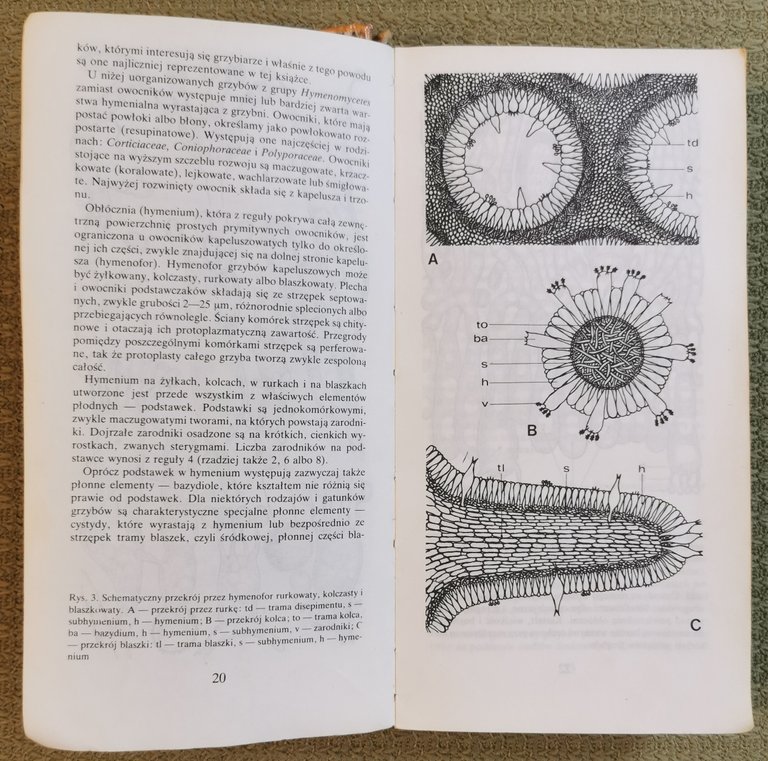
| poradnik zbieracza grzybów, przepisy na potrawy z grzybów i – dla kontrastu – opis zatruć grzybami, a także mały słowniczek mykologiczno-ludzki. - to, co tygryski lubią najbardziej, czyli część atlasowa: opisy poszczególnych gatunków, uzupełnione kolorowymi zdjęciami. Łącznie 323 gatunki (właściwe Czechosłowacji), zarówno dość powszechnie znane i rozpoznawalne, jak też pomijane przez grzybiarzy. | a mushroom picker's guide, recipes for mushroom dishes and - in contrast - a description of mushroom poisonings, as well as a small mycological-human glossary. - what Tiggers like best is the atlas section: descriptions of individual species, illustrated with colour photographs. A total of 323 species (relevant for Czechoslovakia), both quite well-known and recognisable, as well as those ignored by mushroom pickers. |
| Zarówno klasyczne podstawczaki z kapeluszem i trzonem | Both classic basidiomycetes with a cap and stipe |
| jak też i nadrzewne huby | as well as polypores |
| oraz inne grzyby, których na co dzień w ogóle nie zauważamy. | and other mushrooms that we don't notice at all in everyday life. |
| Czy blisko pół wieku po pierwszym wydaniu tej książki może jeszcze ona być pożyteczna dla kogokolwiek? Myślę, że jedynie w ograniczonym zakresie, jako punkt wyjścia do dalszego poszukiwania informacji w internecie. Na pewno daje możliwość poznania znacznej części grzybowego bogactwa Europy Środkowo-Wschodniej (ale równie na pewno – nie całości). Na pewno informacje w opisach gatunków są szczegółowe – autor opisuje nawet rozmiary i wygląd zarodników, co żadnemu przeciętnemu grzybiarzowi do szczęścia potrzebne nie jest. I to by było na tyle, jeśli chodzi o zalety. Bo zdjęcia w dużo lepszej jakości są w zasięgu ledwie paru klików, a nawet jako poradnik grzybiarza w środku lasu poza zasięgiem sieci nie zda się na wiele – poszczególne gatunki są ułożone, jak na rzecz naukową przystało, zgodnie z systematyką naukową, nie według wyglądu – co na pewno nie umożliwi szybkiej identyfikacji znalezionego grzyba. A i sama systematyka zdążyła się od tego czasu mocno pozmieniać wraz z rozwojem mykologii i nowymi odkryciami. | Nearly half a century after this book was first published, can it still be useful to anyone? I think only to a limited extent, as a starting point for further research on the internet. It certainly provides an opportunity to learn about much of the mushroom wealth of Central and Eastern Europe (but equally certainly - not all of it). Certainly, the information in the species descriptions is detailed - the author even describes the size and appearance of the spores, which no average mushroom picker needs to be happy. And that would be enough as far as the positives are concerned. Because photos of much better quality can be found only a few clicks away, and even as a guide for mushroom pickers in the middle of a forest outside the reach of the web, it is of little use - the individual species are arranged, as befits a scientific text, according to the taxonomy, not according to how they look - which certainly does not allow a quick identification of the mushroom found. And the taxonomy itself has also changed a lot since then with the development of mycology and new discoveries. |
| Więc czemu do tego wróciłem? Ze zwykłego sentymentu i dla reanimacji przyjemnych wspomnień z dzieciństwa. Tylko i wyłącznie. | So why have I returned to this? Simply out of nostalgia and to revive pleasant childhood memories. For that reason alone. |
| PODSUMOWANIE Rozmiar: dość gruba (405 stron) Szybkość czytania: powoli Wciąga: niezbyt, ale nie to jest jej celem Dla kogo: dla grzybiarzy |
SUMMARY Size: quite thick (405 pages) Reading speed: slow Engaging: not very, but that is not what it is intended to do For whom: mushroom pickers |
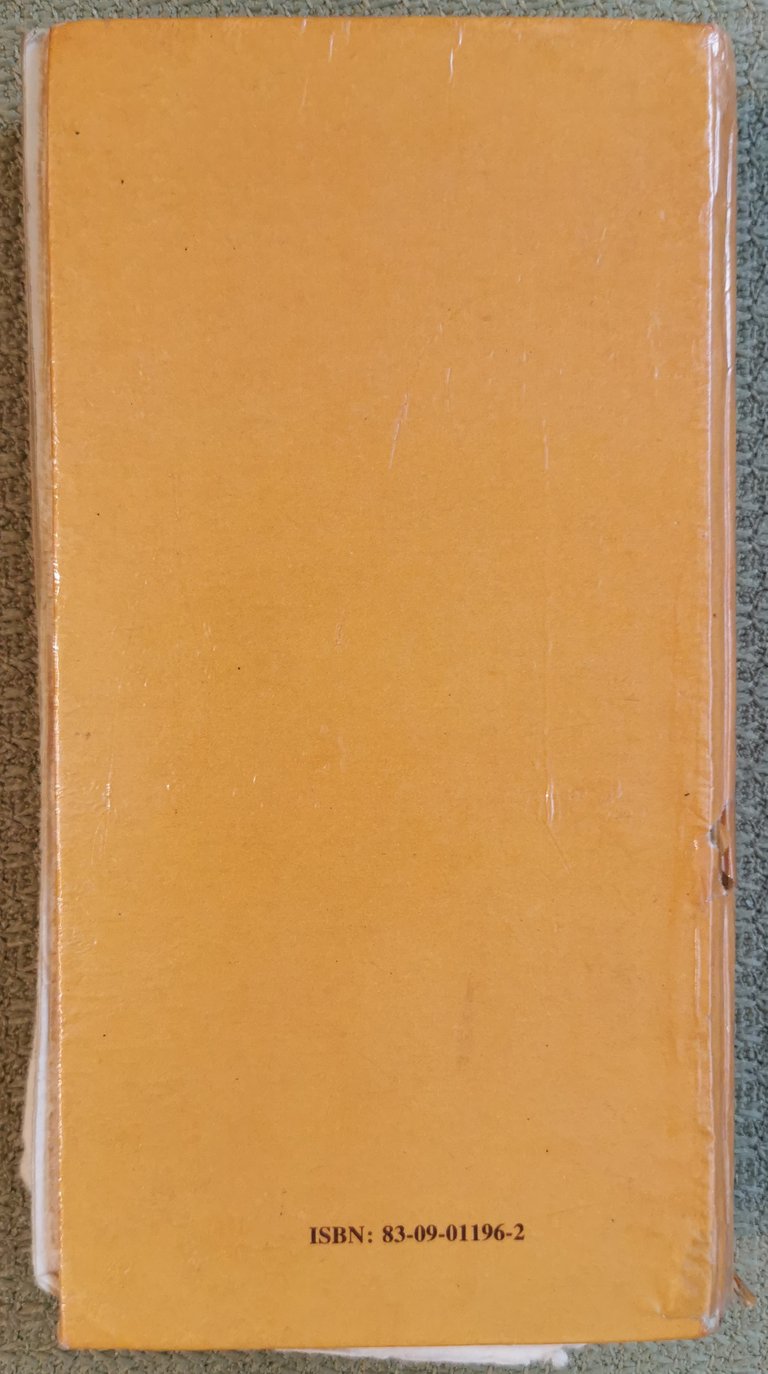
| Zalety: bardzo dużo opisanych gatunków, w tym pomijanych w większości atlasów, jak na ówczesne lata – świetna szata graficzna, szczegółowość opisów | Pros: a lot of species described, including those omitted in most atlases, for the time - great graphic design, detailed descriptions |
| Wady: sporo się zdążyło zdezaktualizować, szczegółowość opisów, niewielka funkcjonalność w realiach XXI wieku. | Cons: a lot has become outdated, too much detailed descriptions, not very functional for the 21st century. |
| Ocena: w momencie wydania co najmniej 8/10, dziś nie więcej niż 6/10, a i to być może z sentymentu. | Rating: at the time of publication at least 8/10, today no more than 6/10, and even that probably out of sentiment only. |
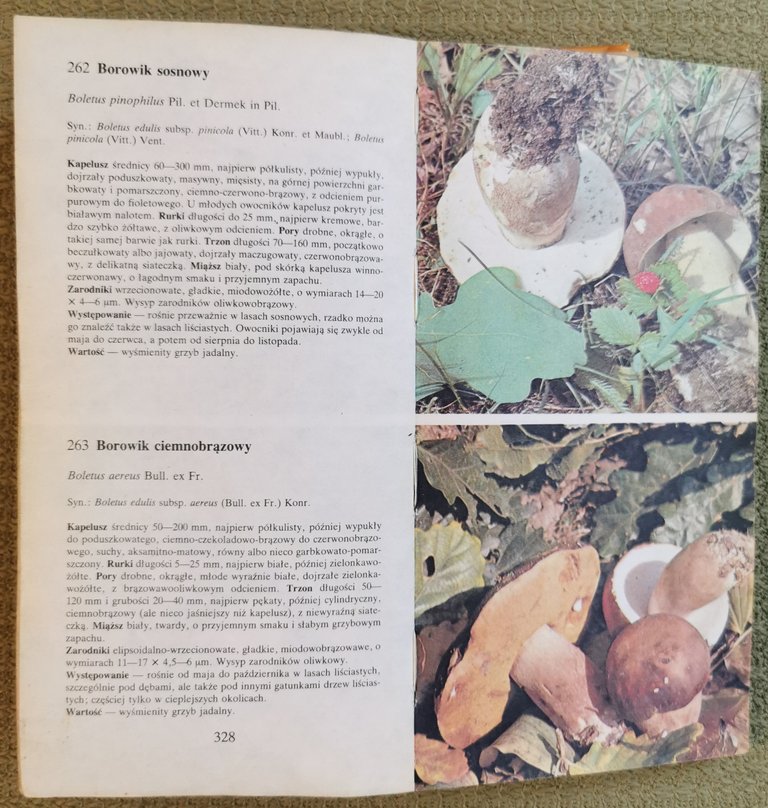
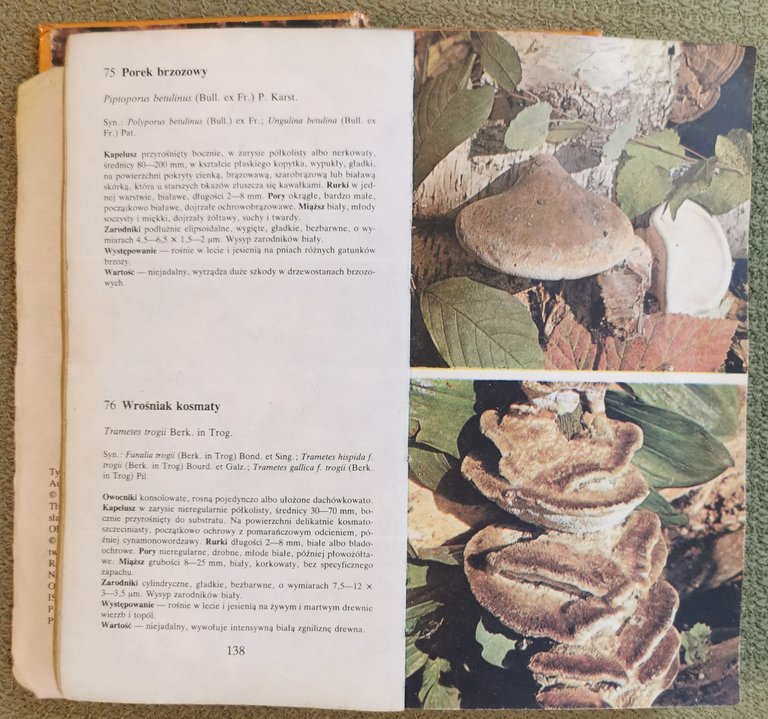
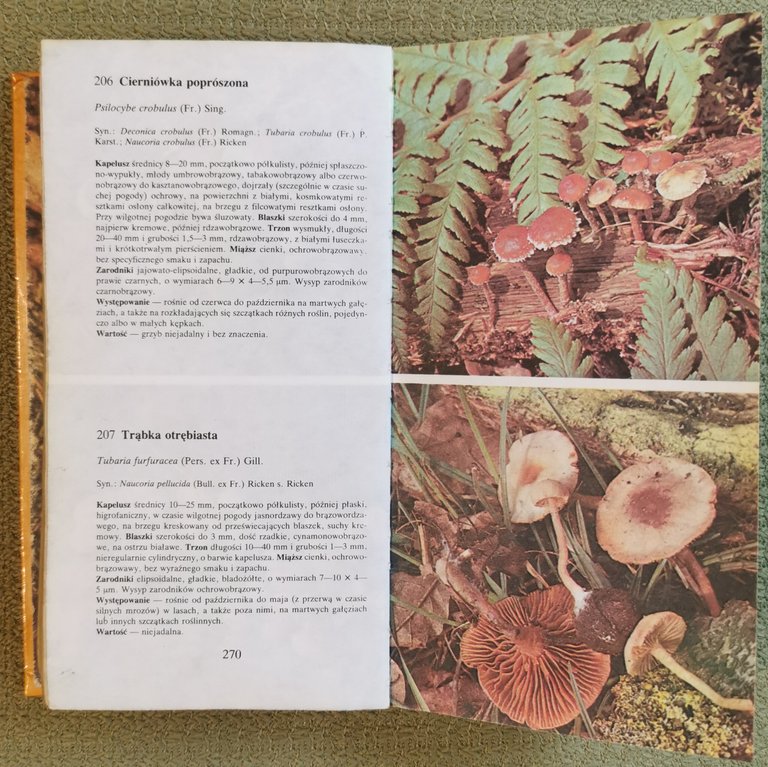
I know that feeling of nostalgia.
When I got a reading block, I tend to just pick up an old read. It always does the magic for me.
I do it sometimes from nostalgia, sometimes to check, if my reception has changed with years and growing up. The other one may become a trap, if I discover, that something I had valued alot being younger, now seems mediocre, or even worse, but sometimes I discover a lot of new details, hidden meanings, the author's play with the reader - and that is great :)